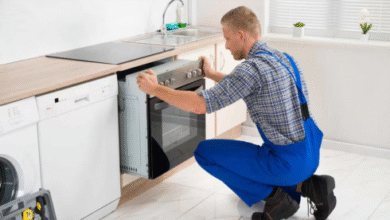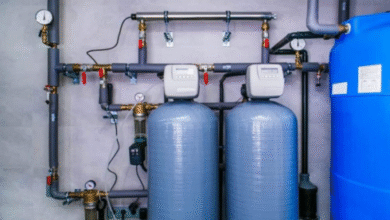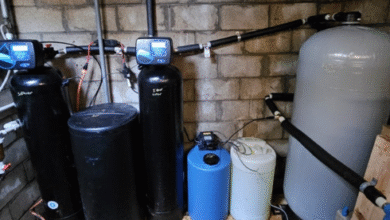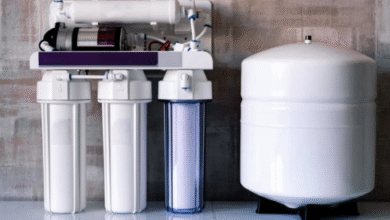Clean Water, Clear Mind: Why Reverse Osmosis Is Quietly Becoming a Household Essential in the UK

There’s something oddly comforting about pouring yourself a glass of water and knowing it’s genuinely clean. Not just “tap-water clean,” but properly filtered, crisp, and fresh—like the kind you’d get in a countryside spring. In the UK, we often take our water for granted, assuming the treatment plants have done all the hard work for us. And to be fair, they do a decent job. But anyone who’s lived in a hard-water area, dealt with limescale on the kettle, or tasted that faint chlorine edge will know: the tap doesn’t always deliver perfection. That’s where reverse osmosis comes in, quietly revolutionising how households think about water.
Why the Fuss About Filtration?
Water quality is one of those things you don’t notice until it goes wrong. A funny taste, a stubborn build-up on your showerhead, or worse, the uneasy feeling that you’re drinking more than just water. While UK standards are strict, pipes can be old, and treatment processes sometimes leave behind a cocktail of trace chemicals, salts, and sediments.
People are becoming more conscious about what they consume—whether it’s organic veg from the farmer’s market or reusable coffee cups. So naturally, the question arises: why not give the same level of care to the most essential thing we put into our bodies daily?
A reverse osmosis water filter works almost like a safety net. It doesn’t rely on a single stage of filtration but layers several, ending with a semi-permeable membrane so fine that even tiny dissolved contaminants struggle to get through. What you’re left with is essentially pure H₂O—clean, neutral, and refreshingly crisp.
The Subtle Differences You Can Taste (and Feel)
If you’ve never tried RO water before, you might be sceptical. “Water is water, isn’t it?” But anyone who’s made a cup of tea with filtered water will tell you: it’s different. Your builder’s brew tastes smoother, less metallic. Coffee fans swear the notes come through more clearly. Even cooking pasta or rinsing rice somehow feels cleaner.
And it’s not all about flavour. Think of the limescale that coats kettles and clogs dishwashers—reverse osmosis drastically reduces the minerals responsible for those deposits. Over time, your appliances breathe a little easier, and you may find fewer repair bills landing on the doormat. It’s the kind of change you don’t appreciate immediately, but a year down the line, it’s obvious.
Installation Isn’t Just for the “Techy” Types
Here’s where a lot of people hesitate. They imagine complicated plumbing, tools strewn across the kitchen floor, and half a day lost fiddling with pipes. In reality, modern systems are surprisingly straightforward. Many are designed to fit neatly under a standard kitchen sink, taking up less space than you’d think.
For households less keen on DIY, professional reverse osmosis installation is widely available across the UK. Local plumbers or specialist companies can usually get it done within a couple of hours. Once fitted, maintenance is mostly about replacing pre-filters every six months or so and swapping the main membrane every couple of years. It’s no more effort than remembering to change a boiler filter or book in your annual MOT.
The peace of mind that comes with knowing your water is filtered to such a fine standard often outweighs the minor hassle of upkeep.
Whole House or Just the Kitchen?
This is where it gets interesting. Some people are perfectly content with a kitchen-based system, since that’s where most drinking and cooking happens. But there’s a growing trend, especially among families in hard-water regions, to go bigger—much bigger. A whole house reverse osmosis setup essentially treats every drop that enters your property, whether it’s destined for your glass, your shower, or your washing machine.
Imagine showering without dealing with soap scum or that tight, dry feeling on your skin. Imagine laundry that comes out softer without relying on heavy doses of conditioner. For households with sensitive skin or young children, the benefits are even more noticeable. It’s a bigger investment, of course, but for those who can stretch to it, the comfort and convenience are unmatched.
Environmental and Lifestyle Benefits
There’s also the wider question: what about bottled water? The UK spends millions every year on it, with plastic bottles piling up despite recycling efforts. Installing a home system cuts down on that dependence almost overnight. Suddenly, you don’t need to lug packs of bottled water from the supermarket. You just turn on the tap, and there it is—clean, filtered water on demand.
Environmentally, it’s a quiet but powerful shift. One less case of bottles purchased might not seem like much, but multiply that across thousands of households and the difference adds up. It’s a way of making sustainability part of your daily routine without really thinking about it.
Cost Versus Value: Is It Worth It?
Let’s be honest—reverse osmosis isn’t the cheapest option on the shelf. Standard jug filters or inline carbon filters cost less upfront. But much like choosing a quality mattress or a reliable boiler, it’s an investment in health and comfort. Over the years, you’re saving on bottled water, extending the lifespan of appliances, and, arguably most importantly, improving the quality of what you drink every day.
When you divide the annual cost by the number of litres you and your family consume, the price per glass often works out less than buying bottled water anyway. And unlike supermarket bottles, you’re in control—you know exactly how it’s filtered.
The Human Side of It
There’s a psychological comfort that can’t be ignored. In a world where we’re bombarded with news about microplastics, contaminants, and health scares, being able to control something as basic as water feels grounding. It’s not paranoia—it’s practicality. Parents, especially, like the reassurance of knowing their kids’ bottles are filled with the cleanest water possible.
Friends who visit often notice the taste difference, too. It’s one of those subtle lifestyle upgrades that gets people talking. Like switching to fresh ground coffee or finally replacing that drafty front door—it’s small in the grand scheme of things, but it makes your everyday life tangibly better.
So, Should You Take the Plunge?
Reverse osmosis isn’t about paranoia, and it’s not about luxury for the sake of it. It’s about trust, comfort, and quality. Whether you choose a compact under-sink system for drinking water or go all-in with a house-wide setup, the change is real and noticeable.
For many UK households, the shift has already started quietly. People are installing systems not because it’s trendy, but because once you experience the difference, it’s hard to go back. Clean water has always been a basic need—but now, it’s also a lifestyle choice.
And if there’s one thing worth investing in, surely it’s the water you drink every single day.



